1.01 Dallas Junglehawgs — RB Darren McFadden |
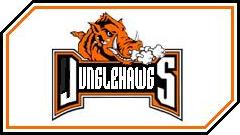 |
|
In my 2006 Draft Wrapup, I said that the Junglehawgs needed to improve at just about every area, and they made me look bad by taking the NFC West and winning TUFF Bowl VII. It seems my comments weren't off after all—just a year ahead of their time. Last year, Dallas proceeded to go from TUFF Bowl champs to 0-14, and one reason is that Ahman Green is shot to heck. McFadden's got the speed, size, and big-play ability, and those three things are all the reasons you need to explain why he'll step into Dallas' starting lineup right away. But there's a word of caution: Mike Mayock of NFL Network says he doesn't have the lower-body strength to break tackles: "What I don't like is how his legs go dead on contact. He's got a tiny lower body, and every time he gets hit, he goes down." Mayock also points out that McFadden has been carrying the ball in the wrong arm—he's right-handed but uses his left arm to carry the ball—and unless he can correct that, he'll continue to fumble more than he should (he fumbled a whopping fifteen times last season, losing five). Off-field issues (bar fights) are another cause for concern, but hopefully, living with his older sister will help him get his priorities straight. |
1.02 Green Bay Ground Hogs — RB Jonathan Stewart |
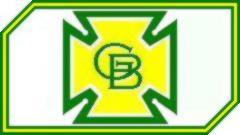 |
|
The best power back available in this year's draft. His trainer said of him, "In my mind, he looks like a He-Man figure." He's got the best size-speed ratio among this year's backs. Green Bay picked up this pick in an offseason trade with Carolina, and personally, I think Stewart (or Rashard Mendenhall, for that matter) would have done far more to solve Carolina's RB problems more than the Buccaneer RBs will. Stewart does what Panther head coach John Fox likes—power running—although initially, he will share carries with third-year veteran DeAngelo Williams. From a strictly objective standpoint, it's a very good pick and it reinforces Green Bay's RB depth (they already have Willis McGahee and Ryan Grant). |
1.03 Tennessee Taz Devils — RB Rashard Mendenhall |
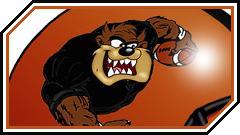 |
|
A year ago, the Taz Devils' backfield looked solid, with Larry Johnson serving as the franchise back, young Cedric Benson getting a starting gig, and workhorse LaMont Jordan bouncing back from injuries. But Johnson got hurt halfway into the season, Benson was unimpressive before breaking his leg, and Jordan simply putrefied. On top of all that, as you all know, Benson was recently arrested for drunken boating and soon could be history in Chi-town. So for the fifth time in the last six drafts, Tennessee has spent a Round 1 pick on a running back. Mike Mayock of NFL Network reviewed tapes of the top four RBs in this year's draft, and says he likes Mendenhall better than D-Mac: "He comes downhill and makes people miss, and finishes the run." He'll give the Steelers the best power runner they've had since Jerome Bettis, and he could split carries with Willie Parker right away. |
1.04 Minnesota Fats — RB Felix Jones |
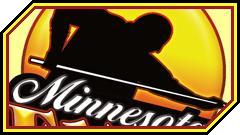 |
|
Despite sharing carries with Darren McFadden, Jones still had back-to-back 1,000-yard seasons at Arkansas. Now a Dallas Cowboy, he replaces Julius Jones as the speedy complement to Marion Barber III (although MB3 should have been given more of a chance to prove he could be an every-down back—I'm sure Derek Maddox agrees). With that said, I thought this was the first surprise of the draft. The Fats could have traded down and gotten either Jones or QB Matt Ryan (the Fats need a backup for Eli Manning). Why? Matt Forte and Kevin Smith have better job situations; Jones' isn't as good unless MB3's contract demands are too great for the 'Boys. Anyway, the hope in Minnesota is that Jones can replace Edgerrin James in the long run. James, who turns 30 in August, is already looking like he's running out of gas (3.8ypc in 2007). |
1.05 Arizona Outlaws — RB Matt Forte |
 |
|
NFLDraftScout.com compares him to Edgerrin James: "Like James, Forte might lack explosive speed, but his lower body strength, balance and body control allow him to shift his weight, sink his pads and drive through arm tackles... he quietly goes about his job and is slowly developing into a solid cut blocker. He seems to get stronger as the game wears on." Bears GM Jerry Angelo says, "What he gives us is a big back, a three-down back," and evidently, 2005 bust Cedric Benson isn't. (I mention Benson's plight in pick 1.03.) While the Outlaws had needs elsewhere (wide receiver), and they didn't have any picks in Round 2 or early in Round 3 to address those needs, Forte is simply a better choice than LenDale White handcuff Chris Johnson. |
1.06 Detroit Vipers — RB Kevin Smith
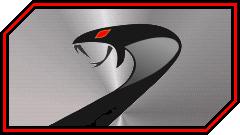 |
|
|
First-round decisions by the Oakland Raiders and Carolina Panthers are a big reason I had to draft a RB for the fourth year running. The Lions traded up in Round 3 of the NFL Draft to get Smith, a workhorse at Central Florida during his junior season (2,448 rushing yards and 29 TDs on 415 carries in '07). Stewart Mandel of SI.com is quick to point out that while he got the bulk of those yards against Conference USA opponents, he also gained 217 yards against North Carolina State and another 149 at the expense of Texas. A big plus is that the Lions' new offensive coordinator, Jim Colletto, is installing the same one-cut running scheme that Smith excelled in at UCF. I'm not going to call him a slam-dunk pick, the way I did Cadillac Williams three years ago... but he's certainly got the opportunity to do well. |
1.07 Cleveland Hoosier Daddy Wannabes — QB Matt Ryan
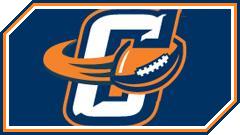 |
|
|
NOTE: Derek Maddox's team, officially known as the "Whosyer Papi Killers," is 1-4 in its last five games against Indianapolis, dating back to Week 12 in 2005. And that one win was very close. Until they demonstrate consistent dominance of Indy, or better yet, change their name to something more sensible, like the Crusaders, I will refer to them as the Hoosier Daddy Wannabes. -Ed.
Cleveland is a similar situation to the 2005 Arizona Outlaws... a team that was close to making the last year's playoffs, and is loaded with draft picks that could turn them into a perennial playoff team. The key word is could—Arizona, which had three of the top eight picks in '05, only hit on one (Ronnie Brown) but missed badly on the other two. I consider Ryan to be a hit. Many draftniks called Ryan the clear-cut No. 1 quarterback prospect in the 2008 class. I agree, especially because, like Ben Roethlisberger, he has strong "intangibles" (the leadership, moxie, guile, and other stuff you just can't measure). Yes, he threw 19 picks last year, but he had a mediocre offensive line in front of him and an average corps of wide receivers to throw to. I probably would have taken him at #6 were it not for certain things that occurred in the NFL Draft. |
1.08 Denver Devils — RB Chris Johnson
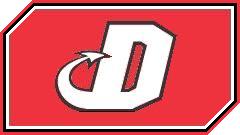 |
|
|
Is he a poor man's Reggie Bush, or (as Scott Wright of NFL Draft Countdown says) "the second coming of Trung 'The Manchurian' Canidate"? He's relatively small and has a history of injuries (neck surgery, turf toe). But he ran the fastest 40yd dash at the Combine (4.24). What's really intriguing about Johnson is this: The Titans plan to use him in a variety of roles, similar to the Saints' use of another Denver Devil, Reggie Bush. The Titans' selection of Johnson—in Round 1, no less—also kills any value Chris Henry had (that's their 2nd-round pick from a year ago, not the ex-Bengal punk jabroni). I'm sure the Devils would have considered Matt Ryan, but they really like Johnson's speed and have compared him to Barry Sanders; furthermore, Denver was able address their QB depth issue by acquiring Alex Smith #1 from Cleveland during Round 2 of this draft. |
1.09 Indianapolis Hoosier Daddy’s — RB Ray Rice
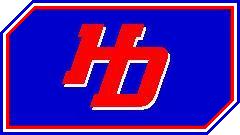 |
|
|
Indy narrowly missed out on the playoffs—turn those close losses in Weeks 3 and 4 into wins, and they would have had the AFC's best record at 10-4. The Hoosier Daddy's decided to go with talent and upside over a far greater need (WR). Rice has a relatively small frame for a featured back. But that's no big deal; he's still one of the better backs in the draft, and he falls this far only because he didn't land a starting job. Here's what Ben Kirwan of NFL.com has to say: "Rice reminds me of Tiki Barber. I have watched him since high school and he plays bigger than his size... Ray makes his linemen look better than they really are with his vision and patience." I had expected Indy to take a wideout, what with Anquan Boldin being traded to Green Bay, Chad Johnson threatening to sit out 2008, and Joey Galloway getting up there in age. Then again, two years ago, Indy took Maurice Jones-Drew (who I thought would be just a "complementary player") over needs (QB, TE) and that ended up working out fine. |
1.10 Dallas Junglehawgs — RB Steve Slaton
 |
|
|
On January 3, 2006, Slaton set a Sugar Bowl record by rushing for 204 yards on 26 carries. He was a freshman back then, and it was thought that he might be "the next Reggie Bush." He continued to have some Heisman buzz four games into the 2007 season. But after games against South Florida (where he fumbled near the USF goal line) and Pittsburgh (11 yards on 9 carries), that buzz died. He declared for the NFL Draft a year early, but mainly because he would have found himself backing him up Noel Devine and playing under a new coaching staff if he had stayed at WVU. You have to wonder if his stats were the product of not only playing in a spread offense, but also playing alongside elusive QB Pat White (who gave opposing defenses a second running threat to deal with). He should make a very good third-down back with the Texans, and the Junglehawgs have taken him here as a handcuff to Ahman Green (and continue the run on running backs—9 of the first 10 picks). One caveat: Slaton, who had wrist surgery in 2007, had some fumbling problems at West Virginia (3 turnovers on 4 fumbles in 2007, and another 3 on 7 fumbles in 2006). And he has fumbled a couple of times in minicamp as well. |
1.11 Tampa Bay Meat Goats — WR James Hardy
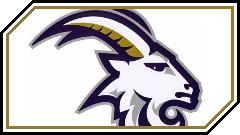 |
|
|
He has a unique blend of size, athleticism and reliable hands, but according to his NFL Draft Countdown profile, he may not be able to separate himself from opposing defenders as well in the NFL as he did in college and is still raw in terms of development as a receiver. No big deal—if he catches touchdowns the way he did at Indiana. After scoring 36 TDs in three seasons there, the #2 WR job in Buffalo is his to lose. And with it, the #3 WR spot on the Meat Goats. I was a little surprised that Granholm didn't go with QB Joe Flacco—they need a backup for Tom Brady, and they already have a handcuff in Kyle Boller—but Hardy is definitely one of the best available players at this spot. |
1.12 San Diego Slewage — RB Ryan Torain
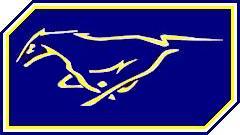 |
|
|
The Slewage soared when Shaun Alexander was in his prime, but the time has come to replace him. That being said, geez, does Mike Shanahan ever NOT add a running back? According to Adam Schefter of the NFL Network, the Broncos see Torain the way they once thought of Terrell Davis. Like Davis, Torain went in Round 5. Thing is, Torain's got durability issues (he sustained a Lisfranc sprain last year, and that is not easy to recover from, although he says he's 100% healthy now). He only had 1 1/2 seasons of college ball (he transferred to Arizona State from Butler Community College in 2006), so Shanahan is judging him by a much lesser body of work (many of the top RBs have two or three full seasons in college). The only reasons he goes this high is 1) the run on RBs taking place in this round, 2) the inflated value that results from being drafted by Shanahan (2005 provided an extreme example of this in Maurice Clarett), and 3) maybe Todd Hansen read a rumor that Alexander might land in Denver after getting cut by Seattle, and jumped on a potential handcuff opportunity. |
1.13 Carolina Convicts — FB Jacob Hester
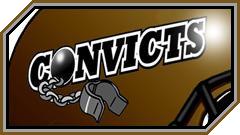 |
|
|
We all know how bad Carolina's running game was in 2007. Their top three RBs (Leon Washington, Kevin Faulk and Leonard Weaver) were pass-catching third-down backs, and when you combine their fantasy points scored, you will find that six running backs out-produced them. This is exactly why I would never have traded down from the #2 spot. At #13, Carolina has stuck to drafting for need, even in the face of the unprecedented run on running backs taking place in this round (9 of the first 10 picks). The Cons have other needs, and could have taken a WR (their WR corps isn't all that great, either). But they apparently went all ga-ga when they read that Hester is the frontrunner to replace Michael Turner as LaDainian Tomlinson's backup. |
1.14 Cleveland Hoosier Daddy Wannabes — WR Devin Thomas
 |
|
|
Scouts, Inc. says: "He will fit best in a West Coast system, where his run-after-catch ability will be maximized." And lo and behold, that's the offense new Redskins head coach Jim Zorn plans to install in Washington (note to Jim: good luck with that—it didn't work in Detroit). Thomas should get his share of action despite having to compete with Santana Moss, Antwaan Randle El and fellow draftee Malcolm Kelly for catches. He's taller than Randle El and definitely faster than Kelly. My only concern with Thomas was that he really only played one full season in college (he only caught six passes in 2006). But all in all, it's a very good pick for Cleveland, whose #3 WR spot is up for grabs between Ted Ginn, Jr., Ronald Curry and David Patten. Thomas will replace the disappointing Sinorice Moss (whom Cleveland selected with this very pick two years ago, and recently traded to Minnesota for another jabroni, QB Joey Harrington). |
1.15 Pittsburgh BIG PAPAS — RB Jamaal Charles
 |
|
|
After spending a few hours trying to work out a deal with Denver, the BIG PAPAS decided to take a guy that Tennessee had hoped would drop to 2.03. Charles ripped off 897 yards rushing and 10 touchdowns in his last five games at Texas, and he decided to enter the NFL Draft a year early on that basis. He's got speed (he was an All-American sprinter at Texas), but he's had fumbling problems (seven fumbles in 2007, losing four, and four more in 2006, losing three). Stewart Mandel of SI.com says that in college, Charles got by mostly on his speed, but he's very raw and will take some time and serious nurturing. He's yet another running back who lands on a team that already has a solid starter at RB (in this case, Larry Johnson). But that doesn't mean I criticize Pittsburgh for making this pick; to the contrary, this is a good pick for them due to issues with two of their top three RBs. Deuce McAllister just had microfracture knee surgery, and Jamal Lewis isn't getting any younger, even if he had a rejuvenation of sorts last year. Besides, Johnson himself spent two years on the bench behind another workhorse who ultimately got too dinged-up (Priest Holmes). Could history repeat itself in Kansas City?
|
1.16 Green Bay Ground Hogs — QB Brian Brohm
 |
|
|
The line above is misleading; Green Bay didn't actually select Brohm. New Orleans took him and leveraged Green Bay into coughing up its 2.02 pick to acquire him, in a deal also involving additional draft picks and backup RBs Tatum Bell and Darren Sproles. Mel Kiper Jr. calls him a "polished pure passer in the Jim Kelly mold." You may be skeptical about Brohm being a product of the Louisville system, but he's got the requisite size for an NFL quarterback. He doesn't have a cannon arm, but he makes up for it with smarts and accuracy. Also, Aaron Rodgers will become a free agent after this season, so Brohm is an insurance policy for Rodgers in more ways than one.
|
2.01 San Diego Slewage — QB Joe Flacco
 |
|
|
San Diego's gone downhill at the QB position ever since Daunte Culpepper sustained that knee injury in 2005. (Byron Leftwich was supposed to be a stud, too, wasn't he?) Flacco, a transfer from Pittsburgh, had a great senior season. He's 6'6", 235 lb., with a rifle arm. Todd McShay says he is deceptively mobile and throws well on the run. Delaware used a primarily shotgun-spread offense, so Flacco isn't polished at this point, but he seemed to do everything right at the Draft Combine. He also has a relatively compact delivery for someone so tall. It's a good pick for San Diego in TUFF. But in the real world, the Ravens reached big time. They could have had Brian Brohm if they had kept the 38th overall pick, so why reach on a quarterback who has adjustments to make, both in terms of the competition he's playing against and the type of offense he's working with?
I mean, Flacco went with the 18th pick in the NFL Draft, and here, he went only slightly higher in a league that doesn't use offensive linemen or defensive players.
|
2.02 New Orleans Chocolate City — QB Chad Henne
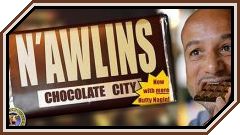 |
|
|
Henne raised his stock at the Senior Bowl. Raiders head coach Lane Kiffin, who coached Henne in that game, thinks he's got a bright future. So does Stewart Mandel of SI.com, who says Henne did well in his last two bowl games and has an NFL-caliber arm. So the Chocolate City might be thrilled to have found its backup for Tony Romo. But I betcha didn't know... defenses aren't allowed to blitz at the Senior Bowl (for the simple reason that quarterbacks aren't supposed to get hurt at the Senior Bowl), so Henne's lack of mobility wasn't made apparent. NFLDraftScout.com compares him to Joey Harrington—"Henne has too many of Harrington's deficiencies to be considered a franchise quarterback." He'll need a Hall of Fame offensive line in front of him—Jake Long, his Wolverines teammate, is a start, but Long's still just 20% of the O-line. As to who the starting QB for the Dolphins will be, Henne holds two edges over second-year signal-caller John Beck: Age (Beck will be 27 in August), and Bill Parcells selected him and not Beck.
|
2.03 Tennessee Taz Devils — WR Limas Sweed
 |
|
|
One of the best picks, both here and in the NFL Draft. Sweed missed most of 2007 with a wrist injury, and that hurt his draft position, because otherwise, he would have gone in Round 1 for sure. He compares favorably to Lions WR Roy Williams, another former Longhorn (as a matter of fact, both wore #4 at Texas). With the Steelers, he'll have to compete with Santonio Holmes and Hines Ward for receptions. But Ward is 32 and it's not out of the question that the Steelers could cut him after 2008 (he'll be due $5.8 million in 2009).
|
2.04 New Orleans Chocolate City — RB Marcus Thomas
 |
|
|
Thomas is competing with Jacob Hester to be LaDainian Tomlinson's new backup, so Team Choco-Bliss felt the need to take him here. He stood out at the East-West Shrine game, but at UTEP, he didn't really produce until his senior season. He "more naturally profiles as a backup or third-down specialist," concludes NFL Draft Countdown. I liked this pick... because it pushed WR Malcolm Kelly one spot closer to my pick.
|
2.05 Dallas Junglehawgs — WR Malcolm Kelly
 |
|
|
It's about time Dallas addressed its terrible wide receiver corps, which was loaded with castoffs, scrubs and the walking wounded last year. Terry Glenn—who cost Dallas a first-round pick in 2006—may never play another down due to knee problems. Enter Malcolm Kelly. He has perhaps the best hands among all WRs in the draft and the strength and physicality to compete with NFL cornerbacks. But health and durability concerns (knee, quad) knocked him down to late in Round 2 in the NFL Draft. He didn't run at the Combine and was slow at his Pro Day (4.68 40), although then again, Larry Fitzgerald ran a 4.63 at the Combine and he easily overcame that.
|
2.06 Detroit Vipers — WR Donnie Avery
 |
|
|
In the debate between size and speed, I usually lean towards "size does matter" over "speed kills." But the last "size" guy who really mattered, Malcolm Kelly, went off the board right before my pick. That left me with three guys that are smaller in size, but are a little faster—Mario Manningham, DeSean Jackson, and Avery. And because I have Drew Bennett on my team, Avery makes sense as a handcuff pick. He's got blazing speed (he ran a 4.34 40 at his pro day), he has the potential to be a deep threat, and the Rams will plug him in right away as their slot receiver. Did the Rams reach on him? Maybe. But head coach Scott Linehan has praised Avery on his work ethic, character and determination, and Avery himself has said he studies game film and practices every day like it was game day. I'm not about to doubt him.
|
2.07 Indianapolis Hoosier Daddy's — WR DeSean Jackson
 |
|
|
Like Ted Ginn Jr., Jackson made a name for himself with electrifying special teams play, but isn't as polished as a receiver. Now, he's been getting football instruction and life lessons from none other than Jerry Rice, and that could go a long way in becoming an NFL wideout. Rice says, "He has all the talent in the world. There's no reason he can't be everything he wants to be at the next level." He is small (5'10" and 169 lb., not 6'0"/178 like the Cal media guide said), and he was only 88th in the nation in receiving last year to begin with. But all in all, it's a very good pick for Indy. It addresses their biggest need, wide receiver, where Anquan Boldin is gone (dealt to Green Bay), Chad Johnson is threatening to sit out the season, and Joey Galloway is 36 years old.
|
2.08 Minnesota Fats — QB John David Booty
 |
|
|
Booty could be a good fit for the West Coast offense, and in the worst-case scenario, could be a very good backup QB. Yes, one of the Fats' biggest needs is a backup for Eli Manning (they passed up Matt Ryan in Round 1). But a recent article on NFL.com says the Vikings' selection of Booty actually further confirms their support of Tarvaris Jackson, and that he's more likely to be the third-string QB this year, behind Jackson and Gus Frerotte.
|
2.09 Indianapolis Hoosier Daddy's — WR Early Doucet III
 |
|
|
Doucet had the chance to emerge from the shadows of Dwayne Bowe and Craig Davis; he missed five games last season, however, and that hurt his draft stock. Still, he has the quickness and natural receiving skills to play on the outside or as a slot receiver in the NFL. He essentially replaces Bryant Johnson as the Cardinals' #3 receiver (OK, he'll have to beat out Steve Breaston and Jerheme Urban, but the former is a kick returner and the latter, well, he's a #4 or #5 WR for life).
|
2.10 Green Bay Ground Hogs — WR Jerome Simpson
 |
|
|
Simpson finds himself in a very good job situation. For starters, he replaces Chris Henry (the Bengals should have cut him two years ago and given his playing time to Tab Perry). He's got huge (10 3/8") hands, bigger than most offensive linemen's, and it's not like small school prospects can't succeed at the NFL level (cases in point: Vincent Jackson, Marques Colston). His job situation is already terrific with the release of Chris Henry, will improve even more if Chad Johnson sits out this season, and there's a chance that T.J. Houshmandzadeh could leave Cincinnati as a free agent next year.
|
2.11 Minnesota Fats — RB Mike Hart
 |
|
|
Michigan's all-time leader in a number of rushing categories, but a 4.7 40yd dash at the Combine hurt him big time. SI.com said in January: "He lacks the size and speed to be a feature runner in the NFL but ... will fit in as a third-down back." Mel Kiper said during the Draft, "As a backup running back, I don't think you can go wrong with him." He can pick up blitzes, hardly fumbles the ball, and is a great positive influence in the locker room. Kiper added, "He has a knack for how to run the football." He has a chance to be the backup to Joseph Addai on the Colts because Addai's backup last season (Kenton Keith) recently gave a demonstration on how not to deal with police officers. As a result, it makes perfect sense for the Fats to take him here. (The Colts recently brought back Dominic "Colossus of" Rhodes, so there will be competition for that backup role.)
|
2.12 San Diego Slewage — WR Jordy Nelson
 |
|
|
Not only did San Diego have QB and RB issues going into this draft, but even their depth at WR (beyond Plaxico Burress and Kevin Curtis) was questionable. Darrell Jackson—once reliable as the Postal Service—had a disappointing 2007 season, and Marvin Harrison was hurt most of the year. The Green Bay Packers took Nelson, who caught 122 passes for 1,606 yards and 11 TDs last year for Kansas State, when they already had Greg Jennings, Donald Driver, and James Jones. It's possible that after 2008, the Pack could jettison the 33-year-old Driver, at which point Nelson and Jones would duke it out for the #2 WR job (with the loser of that battle being #3). According to NFL Draft Countdown, Nelson projects as a #2 WR, and his size and speed are certainly consistent with that projection.
|
2.13 Cleveland Hoosier Daddy Wannabes — TE Dustin Keller
 |
|
|
For the third time in four years, Cleveland takes another stab at getting a starter at tight end (the Jacksonville Jaguars have underused Marcedes Lewis; Alex Smith #2 is stuck in a tight-end-by-committee in Tampa Bay). Keller is a converted WR, undersized for a TE at 245 lb., who raised his draft stock big time at the Combine. He becomes the best pass-catching threat at tight end for the Jets (last year's starter, Chris Baker, has already gone all whiny about the Jets taking Keller). Hopefully, New York can figure out how best to use him, because they once had another converted wideout at tight end—Doug Jolley—and Jolley didn't work out well at all for them.
|
2.14 Baltimore Brown Clowns — RB Tashard Choice
 |
|
|
Choice goes to a Dallas Cowboys team that already drafted Felix Jones and has Marion Barber III, but the 'Boys don't have much depth beyond those two. According to Scouts.com, he gets dinged up a lot because he's a hard-charging back stuck in a body not suited for that kind of running.
|
2.15 Pittsburgh BIG PAPAS — WR Mario Manningham
 |
|
|
Pittsburgh nailed this pick. Manningham has a great deal of upside. "There isn't a savvier route-runner or more clutch receiver in this class than Manningham," said Todd McShay. Yes, Manningham had a disastrous offseason, with a Combine where he ran a 4.60 40, denied testing positive for pot while at Michigan, and scored a 6 on the Wonderlic test (tying the all-time low). The good news is, he ran a 4.42 40 at Michigan's Pro Day, and he goes to the New York Giants, a good place for him—Plaxico Burress has grown up a lot in eight NFL seasons, Toomer is a Michigan man and head coach Tom Coughlin is a great disciplinarian. One more thing—Toomer turns 34 this year and is in the final year of his contract.
|
2.16 New Orleans Chocolate City — FB/RB Jerome Felton
 |
|
|
Felton scored 63 TDs at Furman (he's the all-time leading scorer there) and delivered 45 blocks that resulted in TDs for his teammates. He also can catch the ball. And his idol is Jerome Bettis. Sigmund Bloom of nfldraftguys.com says Felton could vulture goal-line carries from Kevin Smith and Tatum Bell. But that's iffy. In 2002, I spent a 4th-round pick Jarrod Baxter of the expansion Houston Texans. Baxter, who was similar in size and speed to Felton, was the tailback at New Mexico, and was a candidate to vulture TDs from the likes of Jonathan Wells and James Allen (remember them?), but that didn't happen. My point is, yeah, Felton is a good pick... a "swing for the fences" pick here in Round 2, and based on my experience with Baxter, I wouldn't have taken him until Round 4.
|
3.01 Dallas Junglehawgs — WR Eddie Royal
 |
|
|
Royal was one of the best receivers at Senior Bowl practice. He caught everything thrown in his direction and no defensive back was able to contain him. So why didn't we hear of him last fall? Well, his specialty has been returning kicks, not catching passes (he was only the 3rd-leading receiver on the Hokies last fall). He's relatively small at 5'10", 180 lb. He'll have to compete with Darrell Jackson and Keary Colbert on the Broncos' depth chart. (He could theoretically play the slot, but they already have Brandon Stokley for that.)
|
3.02 Carolina Convicts — QB Colt Brennan
 |
|
|
Brennan was impressive in a come-from-behind win over Washington last December 1, but then his draft stock went down after that. Brennan is accused by some of being a "product of the system," that system being Hawaii's run-and-shoot offense. A poor showing against Georgia in the Sugar Bowl and a display of inadequate arm strength at Senior Bowl practices are causes for concern. He has a relatively low release point, so his throwing motion may need to be fixed as well. And he's recovering from hip surgery, meaning he's just as likely to be placed on the injured reserve. He went to the Washington Redskins in Round 6. It's a good place for him; he won't be called on to start, and he'll have an easier time picking up the West Coast offense. But figure on him going straight to the Convicts' practice squad.
|
3.03 Denver Devils — WR Earl Bennett
 |
|
|
Bennett, who left Vanderbilt after his junior season, lands in a favorable job situation with Rick Dailey's hometown Chicago Bears, where Bernard Berrian is gone and all that's left are Mark Bradley, Marty Booker and Brandon Lloyd. The pick also addresses one of Denver's needs going into the draft, as last year, their #1 wide receiver was Reggie Williams (he scored 10 TDs despite not getting a whole lot of receptions, and that's a heck of a fluke).
|
3.04 Tennessee Taz Devils — WR Andre Caldwell
 |
|
|
He's got speed, he can block, not many wideouts have both attributes, and he's among the best available players at this stage of the draft. He'll add more depth to a Cincinnati Bengal WR corps that will need it (for more details, see Jerome Simpson at pick 2.10). I call that a very good value pick.
|
3.05 Pittsburgh BIG PAPAS — TE John Carlson
 |
|
|
Another of the BIG PAPAS' needs was a backup for TE Vernon Davis (David Martin utterly failed to fill the bill last year). Carlson had a poor Combine (4.9 in the 40-yard dash), but he blamed it on a bout with food poisoning that he had two weeks before the Senior Bowl. He did much better at Notre Dame's Pro Day (bettering his best Combine vertical jump by 5 inches, and running a 4.67 40). The Seattle Seahawks took him in Round 2, and he should beat out journeyman Jeb Putzier and perennial backup Will Heller to be the starter at tight end.
|
3.06 Detroit Vipers — RB Timothy Hightower
 |
|
|
I read that the Arizona Cardinals' running backs coach, Maurice Carthon, recommended him, likening him a little bit to Marion Barber III. In 1995, Carthon recommended a little-known guy by the name of Curtis Martin to then-Patriots head coach Bill Parcells. And Carthon knows how to make running backs run. In addition to coaching Martin in New England and New York, he got extra mileage out of backs like James Stewart (while in Detroit) and Adrian Murrell (while with the Jets).
Last season, Hightower gained 1,924 yards on 327 carries (5.9 average) and 20 TDs for Richmond (a Division I-AA program). Scout.com had him rated 10th among all RBs available in this year's draft, ahead of guys like Mike Hart and Ryan Torain. Right now, all he has in front of him in Arizona are Edgerrin James, part-timer Marcel Shipp and 3rd-down back J.J. Arrington. James and Shipp both turn 30 in August. There's even a chance Shipp or Arrington could go bye-bye, which would improve Hightower's job outlook even more. I'm not saying he'll be an every-down back, but down the road, Arizona may have an arrangement where a faster back gets the yards, but Hightower gets the TDs (kind of like Julius Jones and Barber with the Cowboys in 2006).
|
3.07 Indianapolis Hoosier Daddy's — QB Josh Johnson
 |
|
|
Johnson has excellent arm strength and some mobility and will spend 2008 acclimating to the NFL. His coach at San Diego was Jim Harbaugh, a former NFL quarterback. And 38-year-old Jeff Garcia becomes a free agent after this season. Those are three reasons why I like this pick. Trouble is, Johnson's new coach, Jon Gruden, has yet to have success with a quarterback under age 30. Gruden's teams have had more success with older QBs (Rich Gannon in Oakland; Brad Johnson and Garcia in Tampa Bay). I don't know if it's just coincidence or if it's something inside Chucky's head, but between that and there being a half-dozen QBs on the Bucs' roster, I consider it a sticky job situation.
|
3.08 Minnesota Fats — WR Harry Douglas
 |
|
|
Exceptional speed, reliable hands, but just 170 lb. That reminds me of Brandon Williams (pick 4.01 in my 2006 Draft Wrapup). Atlanta needs more quality and depth at wideout, but I just don't see Douglas as much more than a kick returner. I realize that Devin Hester raised the bar on the importance of kick returners, but geez, 99 times out of 100, spending draft picks on kick returners is crazy.
|
3.09 Cleveland Hoosier Daddy Wannabes — RB Xavier Omon
 |
|
|
From a Division II school called Northwest Missouri State. First RB in NCAA history with 4 consecutive 1,500-yard rushing seasons. This pick makes perfect sense (as a handcuff to Marshawn Lynch and Dwayne Wright).
|
3.10 Green Bay Ground Hogs — TE Fred Davis
 |
|
|
Green Bay needed a backup for Kellen Winslow II, and get one of the best tight ends on the board (in terms of talent, not so much where his job situation is concerned). Davis was USC's go-to guy last year (although that was because USC didn't have much at WR). He ends up on a Washington Redskin team that already has Chris Cooley, but Jim Zorn plans to use more two-TE sets where Cooley is moved around the field in an effort to create mismatches. I wonder who will end up getting the most targets in Zorn's offense—on the one hand, Jason "Dougastalgia" Campbell loves to throw to the tight end, but on the other, he now has four wide receivers to throw the rock to as well.
|
3.11 Tampa Bay Meat Goats — RB Justin Forsett
 |
|
|
Let's see, he's playing behind Julius Jones, T.J. Duckett and Maurice Morris. He's not likely to get a whole lot of playing time, but then again, Duckett is the closest thing Tampa Bay has to a #2 running back, so what the heck, let's call it a handcuff pick and move on.
|
3.12 Arizona Outlaws — RB Jalen Parmale
 |
|
|
No, he's not related at all to former Dolphins RB Bernie Parmalee (note that Jalen's last name is spelled with one "e," not two). The Arizona Outlaws did very well to take him here to handcuff to Ronnie Brown. Parmale could be Brown's backup down the road with Ricky Williams (age 31, and just 13 games over the last four seasons) in a contract year and Lorenzo Booker traded to Philly. He is very similar in size and speed to Matt Forte.
|
3.13 Tampa Bay Meat Goats — QB Kevin O'Connell
 |
|
|
The Patriots took him in Round 3, and it can be seen as a sign that the Pats aren't comfortable with Matt Cassel (who only has one year left on his own contract) as a backup. Ron Jaworksi of ESPN absolutely loves him, calling him uncanny with his accuracy, and blames his struggles on terrible talent around him. But the Scouts, Inc. scouting profile says he shouldn't have gone higher than Round 5 because he's a developmental prospect with durability concerns. Nevertheless, it should be noted that O'Connell's selection is the earliest the Pats have drafted a quarterback in the Bill Belichick era.
|
3.14 Baltimore Brown Clowns — TE Martellus Bennett
 |
|
|
The Cowboys already have Jason Witten starting and Tony Curtis backing him up. They plan to use Bennett in two-TE sets, like they said they were going to do with Anthony Fasano when they drafted him two years ago... and we all know how that worked out. But this isn't a bad pick at all—the Brown Clowns have nothing to lose at the tight end position. Their top tight end last year, Alge Crumpler, has been dropping too many passes lately, and Visanthe Shiancoe was yet another overpaid free-agent bust. I was initially surprised that Tim Ozga didn't take RB Thomas Brown as a handcuff to Michael Turner, but Bennett is one of the better available players in terms of talent.
|
3.15 Pittsburgh BIG PAPAS — RB Thomas Brown
 |
|
|
The Falcons took him in Round 6 for additional depth (they already have recent free-agent signee Michael Turner, speedy Jerious Norwood and bowling-ball-in-cleats Jason Snelling). Pittsburgh did such a fine job with its first three picks (RB Jamaal Charles, WR Mario Manningham and TE John Carlson) that anything it gets from this point forward is gravy.
|
3.16 Dallas Junglehawgs — WR Dexter Jackson
 |
|
|
One of the heroes of The Game That Should Have Marked The End Of Lloyd Carr's Career, Jackson offers 4.37 speed. He projects as a slot receiver and punt/kick returner at 5'9.5", 182 pounds. He certainly should contribute right away in both capacities with the Buccaneers, whose other receivers include disappointing Michael Clayton and enigmatic Maurice Stovall.
|
4.01 Dallas Junglehawgs — WR Lavelle Hawkins
 |
|
|
The fourth wideout taken by Dallas in this draft, he might be more productive than Eddie Royal (3.01) or Dexter Jackson (3.16) because he lands on a Tennessee Titans team that had a greater need at WR than most other teams—Mike Williams and Justin McCareins are simply not starter material. He's relatively small at 5'11" and 187 lb., but that didn't stop him from having a great 2007 season at Cal, and then catching 3 passes for 63 yards and a TD in the Senior Bowl. He impressed Mel Kiper enough to land the 15th spot in Kiper's Big Board of the top 25 college prospects last October.
|
4.02 Detroit Vipers — QB Dennis Dixon
 |
|
|
Prior to his knee injury, Dixon carried the Oregon offense with both his arm and his legs (exhibit A: his first half against Michigan last year), and the Ducks sure suffered without him. Now he's headed to the Pittsburgh Steelers, and down the road, there's a chance he could replace 34-year-old Charlie Batch as Big Ben's backup. He'll probably be on my practice squad this year as he continues to recover from knee surgery.
|
4.03 Tennessee Taz Devils — PASS
 |
|
|
Let me use this space to quote from the first episode of the current season of Hell's Kitchen. Matt Sigel had just served Chef Gordon Ramsay a dish of raw venison, raw quail egg, lime zest, olive oil, scallops, caviar and grated white chocolate, and the following dialogue ensued:
Gordon: "Do you smoke?"
Matt: "Cigarettes?"
Gordon: "No."
Why do I mention this passage? Because when Lonnie said "pass," I jumped to the conclusion that he passed without taking any consideration to selling the pick, and thought, What are you smoking??! Seriously, if I'm Tennessee, I at least look for a handcuff pick possibility, like PK Taylor Mehlhaff to handcuff to PK Martin Gramatica, or PK Brandon Coutu to handcuff to PK Olindo Mare, and then deal whichever kicker doesn't get handcuffed for a future pick. More on that later in this Wrapup. (Editor's note 5-12-08: Lonnie told me he tried to sell the pick... but only in the chat room, where no more than 7 owners were present.)
|
4.04 Houston Tethered Swimmers — WR Will Franklin
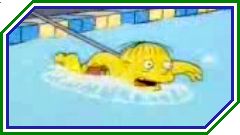 |
|
|
The Swimmers traded their Round 1-3 picks long ago (a third-rounder last fall for Jeff Garcia, the first-rounder in a trade a year ago for Rudi Johnson, and the second-rounder in a December 2006 package deal for Matt Leinart), and still finished 5-9. As a result, this pick is Houston's first of the whole draft. Franklin's got 4.37 speed, and he should have as good a chance as Devard Darling or Jeff Webb of starting opposite Dwayne Bowe. In terms of job opportunity and value for the pick, it's a very good pick. But he has a confirmed learning disability; he will require extra reps in practice due to poor mental retention. It's no reason to write him off, but it's cause to allow him plenty of time to develop as an NFL receiver.
|
4.05 Arizona Outlaws — TE Jermichael Finley
 |
|
|
Finley will compete with Donald Lee for receptions with the Green Bay Packers. It's a terrific handcuff pick because Finley has great potential to be both a receiving threat and an adequate blocker.
|
4.06 Detroit Vipers — PK Brandon Coutu
 |
|
|
I still need a placekicker to cover for Nate Kaeding in Week 9. Heck, I need a backup kicker, period (due to the whole mess that started last year with the NFL putting the Browns and the Chargers on the same bye week, and continued when Justin Medlock lost his job with the Kansas City Chiefs). Coutu's competition in Seattle is Olindo Mare, who had his worst season last year due to hip and groin injuries (just 10-for-17 on FG attempts) and was released by the Saints. Coutu's got a stronger leg than Mare. Also, he's been working with former longtime NFL kicker Morten Andersen on improving the distance on his kickoffs, and with former Bears kicker Kevin Butler on his field goal approach. That impresses me because it shows that Coutu wants to be even better than he already is. Another thing Coutu has that Medlock apparently didn't have: Mental toughness.
|
4.07 Cleveland Hoosier Daddy Wannabes — TE Brad Cottam
 |
|
|
Cottam impressed at the Scouting Combine, but durability is a concern (he had 20 catches in his whole career at Tennessee). He's certainly got the talent, though. Could he be a long-term replacement for aging Tony Gonzalez in Kansas City? Maybe, but he's got to hold up better than he did in college.
|
4.08 Minnesota Fats — WR Adrian Arrington
 |
|
|
At Michigan, Arrington worked well as a possession-style receiver to complement Mario Manningham. But he isn't terribly fast or explosive, only had two years of experience at Michigan, has off-field issues, and left U-M early only because staying would have meant learning a whole new offense under new head coach Rich Rodriguez. But in Minnesota's position, I would have opted for QB Andre Woodson, who not only would have served as a handcuff to Eli Manning, but is regarded as a better player by just about every draft information source, and went a whole round earlier than Arrington to begin with.
|
4.09 Dallas Junglehawgs — QB Erik Ainge
 |
|
|
Ainge is 6'5", 223 pounds, can get out of the pocket and throw on the run, but he's lacking in arm strength and speed. His NFLDraftScout.com profile says his frame is more like a basketball forward's than a football player's (no surprise as his uncle Danny Ainge played for the Boston Celtics back in the '80s), and that he's comparable to (gulp) Ken Dorsey. I'd consider him a developmental project at this point.
|
4.10 Denver Devils — TE Jacob Tamme
 |
|
|
Tamme is favored to replace Ben Utecht as Dallas Clark's backup. Colts GM Bill Polian envisions him compares him favorably to Clark," adding, "He’s taller and a little thinner, but an outstanding, acrobatic, big-play receiver."
|
4.11 Tampa Bay Meat Goats — QB Andre Woodson
 |
|
|
Talk about a drop in draft stock. On October 2, Frank Coyle (draftinsiders.com) had Woodson rated as the #4 overall draft prospect. But despite leading Kentucky to an upset of LSU, he fell down the draft boards of leading draft pundits because of his slow, deliberate windup delivery. He had a chance to shine at the Senior Bowl (because Matt Ryan and Brian Brohm opted out), but he showed inaccuracy at practices. In addition, Mike Mayock (NFL Network) says he's not consistently accurate to begin with. He went to the Giants late in Round 6. He may be a project due to the mechanical adjustments he'll need to make, but he's still one of the best available players.
|
4.12 San Diego Slewage — RB Chauncey Washington
 |
|
|
The only offensive offensive player drafted by the Jacksonville Jaguars in 2008, it's possible he could back up the duo of Fred Taylor and MJD while Greg Jones gets pigeonholed into fullback duty. He's a no-nonsense north-south runner, and reportedly ran a 4.35 at his Pro Day, but (according to this analysis) has quite a few negatives. Washington is the only RB that Scouts, Inc. slapped with the "mental" red flag, as in "Does not retain and learn the system." He was academically ineligible in 2004 and 2005, and has a history of injuries.
|
4.13 Dallas Junglehawgs — RB Cory Boyd
 |
|
|
He would have made an ideal handcuff pick for the Carolina Convicts, who traded out of the #2 spot to get Earnest Graham and Cadillac Williams. His profile just has "what the heck, we've got nothing to lose now that he's fallen this low" written all over it.
|
4.14 Detroit Vipers — PK Taylor Mehlhaff
 |
|
|
By taking Mehlhaff here, I could make a deal with Tennessee (the team that passed at 4.03) that guarantees that both teams will have backup kickers. Mehlhaff has got a solid leg, can kick in crappy weather, got better each year at Wisconsin, and now has the chance to kick for a dome team with a potentially very good offense.
|
4.15 Pittsburgh BIG PAPAS — WR Marcus Monk
 |
|
|
Monk emerged as one of the nation's top deep threats as a junior in 2006, with 962 yds and 11 TDs on 50 catches. But 2007 was pretty much a wash due to a preseason knee injury, and it severely hurt his draft stock as well. He passed up the option to redshirt the season and come back in 2008. He's taller than many wideouts at 6'6", and that could make him a "red zone specialist," but most scouting reports I read said he had no burst out of his breaks and only ordinary downfield speed. Still, it's a low-risk, high-reward pick.
|
4.16 New Orleans Chocolate City — QB Matt Flynn
 |
|
|
The Chocolate City ends this draft with a "homer" pick in LSU quarterback Flynn. Hmmm... it seems that the last time Tommy Hartdegen won a TUFF Championship (2003), he also took another LSU QB (Matt Mauck) to end the following year's draft. Anyway, the NFL Draft Countdown profile on Flynn puts it best: he could be a #2 QB or a clipboard holder, but there are plenty of those in the TUFF free agent pool as it is.
|













































